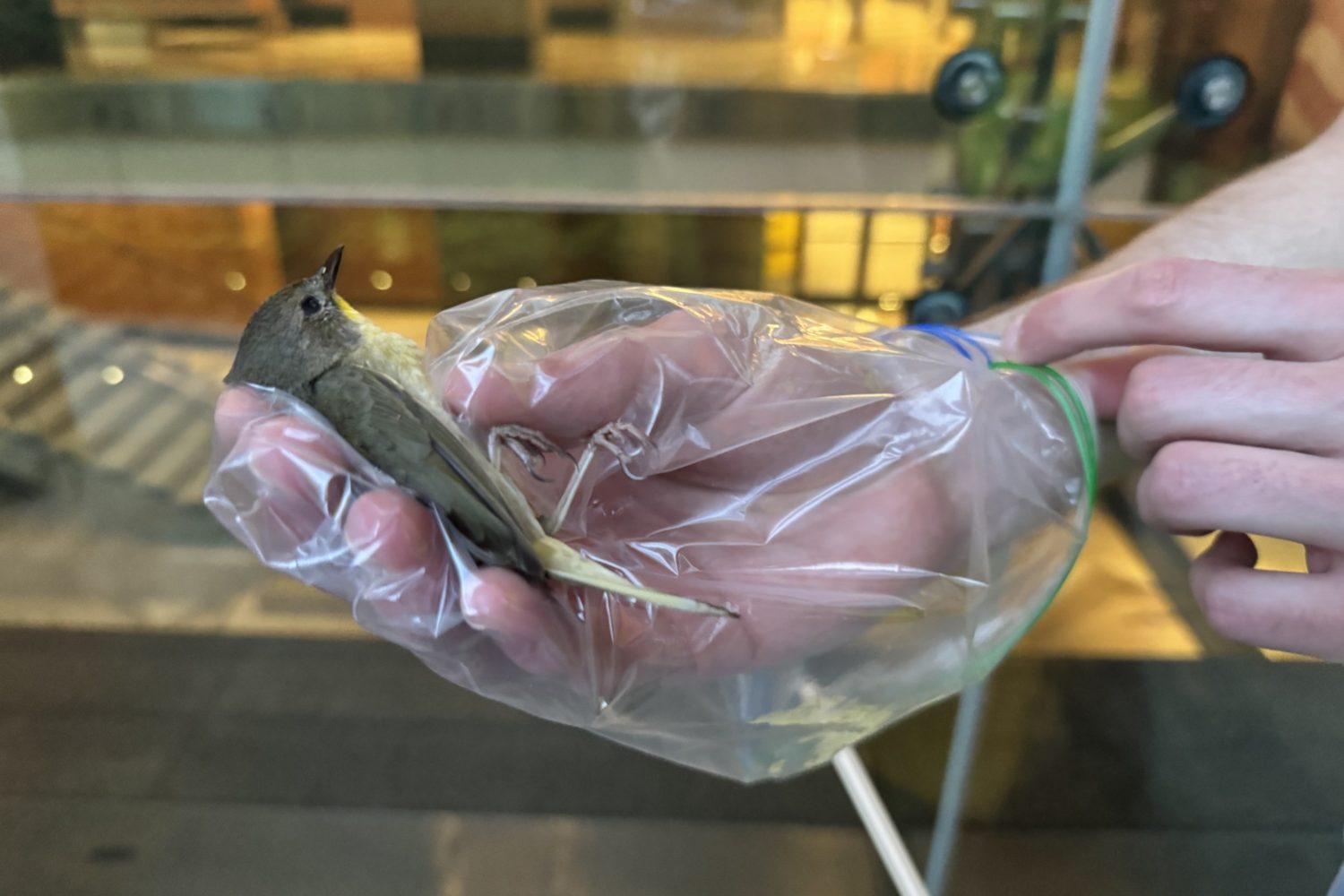On a July morning in 1991, congressmen, staffers, and a few reporters filed into a room in the Rayburn House Office Building for a routine hearing: The new FDA commissioner, David Kessler, was scheduled to testify. It was the sort of thing beat reporters could cover in their sleep. But for a 27-year-old Canadian kid named Malcolm Gladwell, who had been hired by the Washington Post four years earlier with no newspaper experience, the wheels were turning.
What ran in the Post the next day wasn’t standard fare. Rather than dive into the policy debate—he got there in the tenth paragraph—Gladwell began with a sketch of a green and edgy FDA commissioner caught in a political morass:
Kessler broke from his Calvin “Silent Cal” Coolidge impersonation just once, and after that Waxman asked him whether he spoke for himself or for the administration.
“I certainly speak for the administration, and it is very important that we speak with one voice,” he said, as knowing smiles broke out across the room.
He then referred the next question to one of his aides.
The writer’s tone is unmistakable: It’s the irreverence of a stranger in Washington.
Malcolm Gladwell spent eight years in Washington, mostly as a reporter for the Post—long enough even for a kid from Canada to get swallowed by the strange social physics inside the Beltway.
Somehow that didn’t happen. After moving to Manhattan in 1993 as the Post’s New York correspondent, Gladwell—now a New Yorker writer and author of two best-selling books—ditched his glasses, surrendered to his hair, and seems to wear shoes only reluctantly.
Since joining the New Yorker in 1996, he has made a name for himself as a journalist who can translate psychological research into accessible terms. His articles take a low-altitude/high-altitude approach, often beginning with narratives populated with quirky characters and ballooning into examinations of broad social phenomena.
He takes the same strategy with his two books, The Tipping Point: How Little Things Can Make a Big Difference (2000) and Blink: The Power of Thinking Without Thinking (2005). Both have sold 3 million copies and made him a sought-after speaker at campuses and corporations.
The Tipping Point examines people and factors that can transform obscure trends into epidemics, and the phrase has become a household term since the book was published. Blink zooms in on the often-subconscious judgments one makes in the first seconds of exposure to a new person or subject.
It’s a strange line of work for someone who got his start in Washington, a place that is, in Gladwell’s words, “its own separate universe.” While he speaks fondly of his time here, friends from his DC days agree he was unusually impervious to Washington’s magnetic field.
“Malcolm was thoroughly unconventional,” says Post columnist David Ignatius, who as Outlook editor in 1987 was instrumental in bringing Gladwell to the paper. “And this is a town where it’s sometimes hard to find journalists who work outside the mold.”
Gladwell arrived in Washington in 1985 after a stint at the American Spectator, a conservative magazine then based in Indiana; it was his first job after graduating from the University of Toronto. He got his start here with the Ethics and Public Policy Center, an institution devoted to reinforcing the bond between religious values and public policy.
“I was Canadian, so this was all very unfamiliar,” Gladwell says.
When he first saw downtown DC, he mistook one of the Treasury buildings for the White House, judging purely by its size. When he saw the real thing, he found it to be “dinky.”
His trajectory to the Post was quick. At the time, he considered himself a conservative, friends say. While working at the right-leaning Ethics and Public Policy Center, he began to freelance for the more liberal Washington Monthly and the New Republic. From there he went on to Insight, a conservative magazine owned by the Washington Times.
Gladwell’s earliest articles reflect his neoconservative ancestry and portend the style that has made him famous. His first New Republic piece—about academic requirements for student athletes—is disdainful of opposition to beefed-up eligibility hurdles, particularly from Jesse Jackson and the NAACP. But he seems more interested in the hypocrisies of the system than in any one person’s agenda. In the end, none of the critics comes off well.
Another piece, in May 1987, debunks what he believes are three myths of the burgeoning domestic computer-chip market. That journalistic strategy—to prop up and then bowl over the conventional wisdom—has become his trademark.
Around the same time, the Post’s David Ignatius was on the prowl for talent. Someone mentioned a young kid who was writing for the “Moonie paper,” as they called the Washington Times, after its founder, the Reverend Sun Myung Moon. Ignatius called Gladwell in for an interview.
“He didn’t fit any of the usual categories,” Ignatius says. Although he remembers Gladwell as being “mildly conservative,” he found him to be less a political animal than a “person of natural curiosity”—a trait that made up for his comparatively little experience in journalism.
Ignatius didn’t end up having a place for Gladwell in the Post’s Outlook section, but the editor passed Gladwell’s name around. He ended up on the Business desk, where he worked under Steve Pearlstein, then the section’s deputy editor.
“Steve was a very important encouraging force for me,” Gladwell says. Pearlstein had an “open, free-ranging mind” and taught Gladwell that having a beat gave one the “freedom to explore ideas” in the course of day-to-day reporting.
Pearlstein was known for trolling around the newsroom with a clipboard on which he kept a list of reporters, what each was working on, and when their articles were due.
“Early on, we discovered that the best thing to do with Malcolm was to let him be Malcolm,” Pearlstein says. “When you’re Malcolm’s editor, you don’t worry about whether something is important—just that it’s interesting.” He left the box on his clipboard next to “Gladwell” blank.
In those early years in Washington—before he became more established at the Post and moved to the science team—Gladwell ran with a crowd of other young journalists. Among them were Jacob Weisberg, now editor of the online magazine Slate, and several current New Yorker contributors, including Washington correspondent Jeff Goldberg.
Gladwell’s friends from those days describe him as inquiring, eccentric, and uninterested in Washington orthodoxy.
“Malcolm has always been in love with theories,” says Weisberg. “He was never one of those people who talked about journalism with a capital J.” The two remain close.
Weisberg and Gladwell lived in a four-person house in DC’s Mount Pleasant neighborhood at Adams Mill Road and Kenyon Street. Weisberg describes the house as having a “Greco-coffee-shop motif”—shorthand for a place bad enough that no amount of partying could make it worse. Their parties were a mix of the New Republic crowd, where Weisberg was interning, and what Goldberg calls Gladwell’s friends from “the conservative mafia.”
Washingtonpost.com columnist Jefferson Morley knew Gladwell and attended some of those parties. Morley remembers them as “intensely political” but says he never thought Gladwell was a true member of the conservative movement.
“He was a little sheepish about working for the Washington Times,” Morley says. “He was too playful to be a neocon.”
Weisberg and Gladwell occasionally held dinner parties, during which Gladwell fed guests questions that poked around in the corners of some idea or another: Are you “crazy normal” or “normal crazy”? Is your intelligence “more” or “different”? Gladwell was “different,” while Weisberg was “more”—a type of intelligence Gladwell insisted was better.
Weisberg says such activities were a means of resisting the forces of Washington sophistication, in which the question of the night at a dinner party might be on a person’s opinion of some flavor of the week among policy hounds.
“His questions were a kind of parody of what happens at a grown-up Washington dinner party,” Weisberg says.
Gladwell and Weisberg acquired a Ping-Pong table that consumed most of the living room, and they became fiercely competitive. In 1985, they had what Weisberg believes might have been the first ’70s party, complete with disco shirts from Goodwill. He thinks Gladwell wore an Afro wig.
Gladwell eventually moved up Kenyon Street to a third-floor apartment at 18th Street, where he lived with Goldberg, who was working the Post’s night police beat.
“He was already entering into the realm of pure thought,” says Goldberg. One night, he returned home to discover Gladwell listening to “some ancient Jewish clarinetist” who had captured his imagination.
More than a decade before Gladwell published Blink—a book devoted to the power of intuition—he set up Goldberg with a woman named Pam, who would become Goldberg’s wife.
“Malcolm intuited that I would marry the person he introduced me to,” Goldberg says. That same intuition has guided Gladwell in his career: “He has a sense of what masses of people will be interested in. He looks at things and quickly feels their worth.”
Today Gladwell has nothing but praise for the Post. “Those days were hugely fun,” he says, “the most fun I’ve ever had in journalism.”
There was no question Gladwell was different. Some reporters, Ignatius says, quickly become inculcated in the Post and adopt all of the institution’s values. “Malcolm is quirky enough that there’s a way in which he defies influences,” he says.
Gladwell was a minority on several counts. His mother is Jamaican, his father British; his ties to the neocons further alienated him from other young journalists. He was conscious of how his heritage shaped his attitudes. “He talked about that a lot,” Morley recalls.
Not so at the Post. Ignatius says Gladwell “aggressively resisted” being typecast as a minority in the newsroom.
From the Business desk Gladwell moved to the science team, where he covered a lot of the same topics—the FDA, prescription drugs—from a new perspective. He wrote about the AIDS epidemic, which he now credits as being influential on his later exploration of the “tipping point” phenomenon—an idea he may have first discovered in an article Morley wrote for the New Republic on a middle-income housing project in Brooklyn.
In that context, the tipping point refers to the percentage of African-American residency in a housing project that would cause white residents to move out—considered at the time to be 30 percent.
“I remember Malcolm questioning me closely both about the sociology and the ethics of the story,” Morley says.
Gladwell’s playfulness comes through in articles from those days. His stories in the late ’80s and early ’90s range from a legal examination of pepperoni to a dissection of a “Dingellgram”—a letter from the epistolary Michigan Democrat John Dingell.
“I think there was a tacit encouragement of those who wanted to inject some personality into their writing,” Gladwell says. “The Post is very much a writer’s paper.”
Gladwell seems to have quickly discovered how to use that license to get his quirkier pieces in print.
Pearlstein acknowledges a certain strategy to it. “You have to develop a reputation,” he says. “When you do that sort of thing, editors like it and print it and give it good play, but you don’t ask permission beforehand. It has to come in the back door.”
The combination of Gladwell’s playful streak and the Post’s defense of artistic license didn’t always mix well.
Friends’ recollections—as well as an account of those days that Gladwell gave during a Manhattan storytelling series called the Moth, a recording of which was obtained by The Washingtonian—paint a picture of a reporter who bent the rules and occasionally snapped them in half.
The mischief peaked with what Gladwell refers to as “the contest.” He and another young science reporter, William Booth, chose a phrase and competed to see who could insert it in the newspaper faster. The contest culminated with the phrase “perverse and often baffling.”
Booth wrote a story on mollusks. “The copy desk took out ‘often,’ ” he says in the recording, “arguing, I think correctly, that mollusks were either baffling or they weren’t.”
Finally, with the clock ticking, Gladwell struck gold. He discovered that Washington is home to both the country’s highest number of gastroenterologists per capita as well as the highest fees for gastroenterology, flying in the face of supply-and-demand rules.
Baffling indeed, and possibly perverse—at least by the standard of Post editors. Gladwell won the contest.
“Malcolm very conspicuously ignored the rules of being a newspaper journalist,” Weisberg says. “He believed in being selectively bad at the things you didn’t want to do.”
If Gladwell got an assignment he didn’t like, Weisberg says—covering a natural disaster, for example—he made sure to screw up in some way that would ensure he’d never get that sort of assignment again.
Even then, there was some question as to the extent a daily newspaper could accommodate someone like Gladwell. “A newsroom can be a constraining place for someone whose mind roams freely,” Goldberg says.
Opinions differ on the degree to which a newspaper like the Post—which markets itself as the most stylish and protean of the major dailies—has room for the future Malcolms of the world.
“It’s a big newspaper, and we like creativity,” executive editor Len Downie says. “We don’t have any straitjacketed definition of what a Washington Post journalist should look like.”
This is a personal hobbyhorse for Pearlstein, who, as Gladwell acknowledges, has long argued that beat reporters are most positioned to explore big ideas and redraw journalism’s boundaries.
“We’ve created this false dichotomy,” Pearlstein says. “We have this idea that if you have a beat, it’s got to be boring. It is from getting to know a beat deeply—combined with a catholic curiosity—from which the best ideas come. This is not a core competency of the Washington Post. We value it in principle more than in practice.”
Ignatius acknowledges that it’s much easier to value creativity in the abstract. “It’s easy to be a quirky young writer and write unconventional things,” he says. “It’s harder to be a grumpy middle-age editor and let them in the paper.” Still, Downie and Ignatius insist that the Post can accommodate people like Gladwell.
“It’s fun to take a poet and put him in a footrace,” Ignatius says. “That’s going to be really important moving forward. Conventionality and tightness are a huge threat.”
Gladwell hasn’t lived in Washington for 13 years. That distance—combined with the reflections he has developed over researching and writing two books based on psychological research—gives him a different perspective on the perverse and often baffling life inside the Beltway.
“The degrees of separation are smaller,” he says in reference to one passage in The Tipping Point that discusses social psychologist Stanley Milgram’s experiment on the number of people separating any two strangers. “It’s a manageable place. You actually can know the players.” Even as a Post reporter in his twenties, “there was almost no one in Washington I couldn’t get on the phone.”
In the gospel according to Gladwell, Washington is small. “Big government cracks me up,” he says. Take a private Fortune 500 company in New York, he suggests: “That’s big.”
By the same token, he believes, Washington isn’t nearly as driven by money as the conventional wisdom professes. Even with lobbying dollars reaching well into the millions, the sort of cash funneled around the nation’s capital is practically a rounding error in Manhattan’s Financial District: “That kind of money would get you laughed out of the room on Wall Street.”
Gladwell says Washington thrives on “ideas and social interactions,” making it distinct from any other American city.
“Washington is about intellectual and social culture,” he says. “There’s a very specific set of skills it takes to get ahead in Washington, but there are a smaller number of paths to the top.”
In that sense, there is a “powerful self-selection that goes on” among those who come here to work for the government. “You’re seeing a group that’s self-selected toward public service, as corny as it sounds.”
By way of example, he brings up Henry Paulson, the new secretary of the Treasury, who before working on Wall Street spent several years in the Nixon administration. Measured against Paulson’s alma mater, his IQ, or anything else, Gladwell says, “his decision to come to the White House is more telling than all the others combined.”
That’s pure Gladwell: cutting through conventional wisdom to define a new way of understanding how something works.
“It would be very interesting to watch him cover Congress for a year,” says Goldberg, now chief of the New Yorker’s Washington bureau. “He would probably cover it as anthropological expedition.”
Gladwell said he has no interest in that challenge.
In the end, it’s hard to reach any other conclusion than that a mind as roaming and unconventional as Gladwell’s could not prosper forever in Washington.
“Maybe Washingtonians just don’t want that,” Morley says. “Maybe we want crossfire, partisan strife. It’s too bad. I miss him.”
Gladwell is 43—hard to believe for anyone who has met him. He would stand out like a sore thumb in Washington, not because his hair protrudes ten inches in every direction but because he refuses to stand in the quicksand of conventional wisdom.
Are more Malcolm Gladwells just what Washington needs?

















